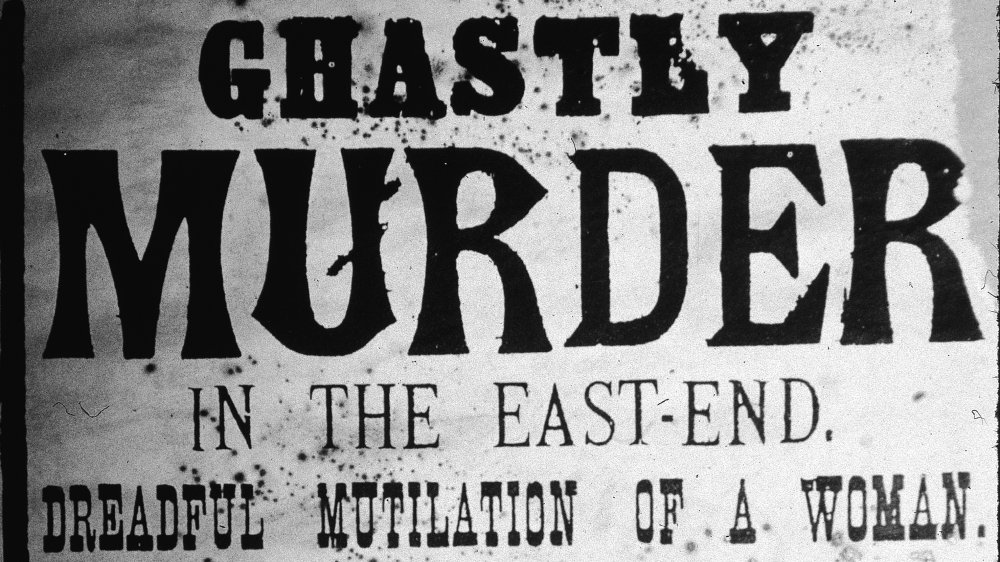Was Aaron Kosminski Actually Jack The Ripper?
In the pantheon of fascinating unsolved crimes few have garnered more attention than the mystery of who was brutally murdering sex workers in London's Whitechapel neighborhood in the late 19th century. The list of Jack the Ripper suspects is extensive, ranging from con men and vagabonds to Queen Victoria's own physician. A recent hot topic of armchair detectives working the Whitechapel murders case is DNA evidence that purports to link a Polish Jewish immigrant named Aaron Kosminski to the killings. But is this proof that he really was Jack the Ripper?
Kosminski was a suspect in the case at the time of the original investigation. In the middle of the 20th century a memo written by Sir Melville Macnaghten, assistant to the chief police officer in London at the time, was uncovered that named three suspects, including an individual identified only as Kosminski. According to Macnaghten's memo Kosminski "...became insane owing to many years indulgence in solitary vices. He had a great hatred of women, especially of the prostitute class, & had strong homicidal tendencies..."
The case against Kosminski (and the case against that case)
Over a hundred years later new evidence appeared to directly link Kosminski to the murders. In 2007 the author Russell Edwards purchased a shawl at auction which was believed to have been found near the body of Jack the Ripper's fourth victim, Catherine Eddowes. The shawl was passed off to biochemist Jari Louhelainen who, along with his colleague David Miller, ran tests to compare the mitochondrial DNA extracted from the shawl with that of some of Kosminski's living relatives. Edwards used the unpublished conclusions to build a case against Kosminski in his 2014 book Naming Jack the Ripper. The results of those tests purporting to show a match between the DNA from the scarf and Kosminski's descendants were later published in a 2020 paper in the Journal of Forensic Investigations.
But not everybody is convinced. The 2020 paper did not include specific information about the genetic sequences of the DNA included in the study, which has caused fellow experts in mitochondrial DNA to cast doubt on its findings. Forensic scientist Walter Parson told Science Magazine of the lack of work shown in the paper "I wonder where science and research are going when we start to avoid showing results but instead present colored boxes."
Furthermore, the provenance of the scarf itself is not officially confirmed. The Smithsonian Magazine quotes Ripper historian Hallie Rubenhold as saying "[T]here is no historical evidence, no documentation that links this shawl at all to Kate Eddowes." That and the fact that the scarf was well over a century old and had been handled by countless numbers of people between its recovery and the tests makes it difficult to be satisfied with any findings.
Despite Edwards' claims that he had "definitely solved the mystery of who Jack the Ripper was," Aaron Kosminski retains the presumption of innocence until more conclusive proof surfaces, and the identity of Jack the Ripper remains a mystery.

